
Data is the cornerstone of any successful marketing strategy. Data tells us who are customers and prospects are, how to personalize the customer experience, which channels they prefer, and informs every touchpoint along the customer journey.
Despite the importance of utilizing high quality data to fuel new revenue streams and ROI, marketers continue to see data quality as somewhat of an abstract concept. After all, it is difficult to measure, challenging to prove the benefits of investing in data quality measures, and often seen as a time intensive project for which there is no budget.
Whether or not we are paying attention, poor quality data still exists and will continue to undermine even the best laid out marketing strategies. We have all heard of GIGO (Garbage In, Garbage Out), so what we may not be aware of may be causing some serious damage in lost revenue, damaged customer relationships, wasted marketing expenses, and any number of lost opportunities.
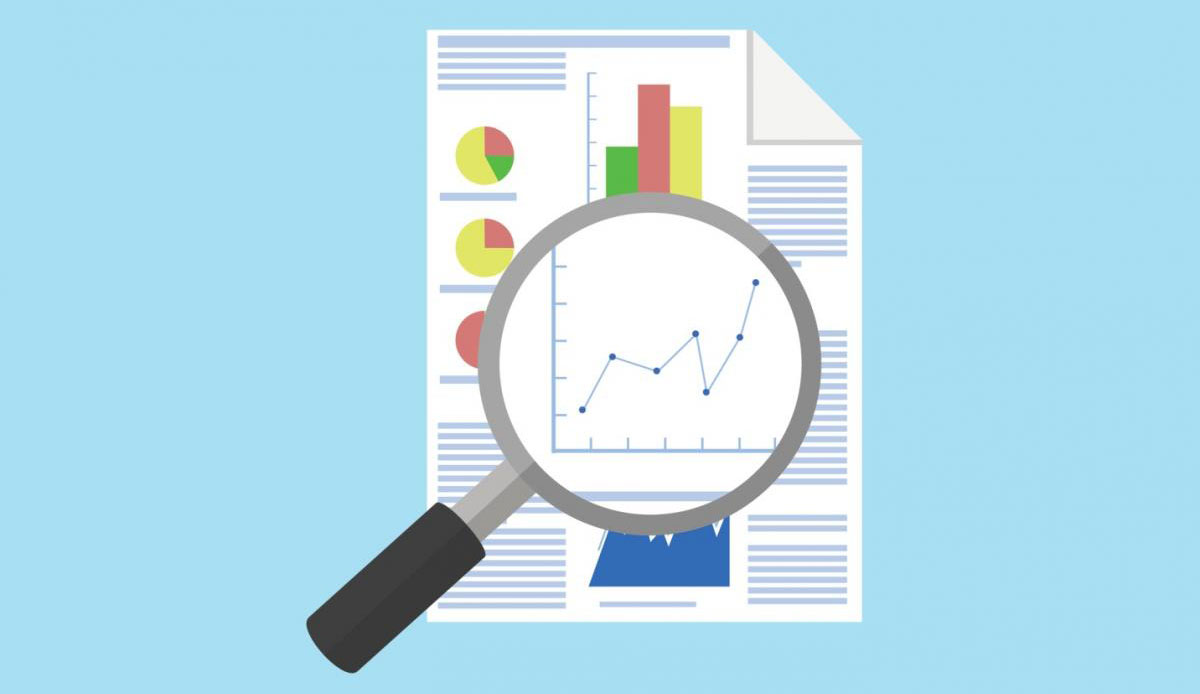
In a report commissioned by Blazent, fewer than half (40%) of the study’s respondents were very confident in the state of their organization’s data quality. Only 50% of respondents believed that the quality of their organization’s data was either slightly better than satisfactory or at least good enough in general.
Industry standards place data decay at an average of 2% per month so over time, the data sitting in your systems will go bad as customers move, change phone numbers, get divorced or married, and so forth. Beyond this natural decay of data, respondents to the Blazent survey indicated that data entry by employees was one of the most critical sources of poor data quality at 57.5%. Other causes of poor data quality included data migration or conversion projects (47%), mixed entries by multiple uses (44%), and changes to source systems (43.5%).
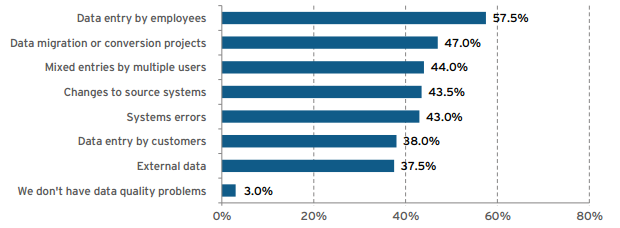
For those respondents that have implemented data quality measures, the business value proved to be significant. Findings included:
- 50.5% - increased revenues
- 48.5% - Reduced Costs
- 46.5% - Less time spent reconciling data
- 46% - Greater confidence in analytical systems
- 43% - Fewer errors
- 40.5% - More accurate orders
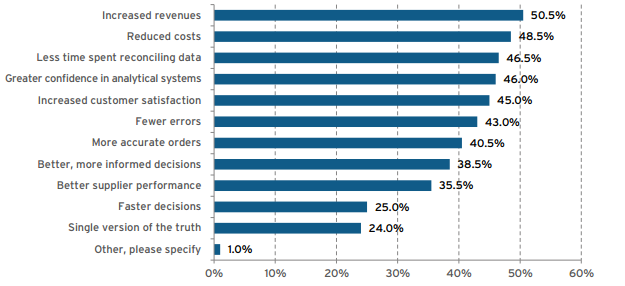
Informatica, in partnership with Dun & Bradstreet, engaged Ascend2 to conduct a survey on the state of data-driven marketing, how marketers are using data, and their challenges to success. The Data-Driven Marketing Trends Report findings show data quality as the most challenging obstacle to data-driven success.
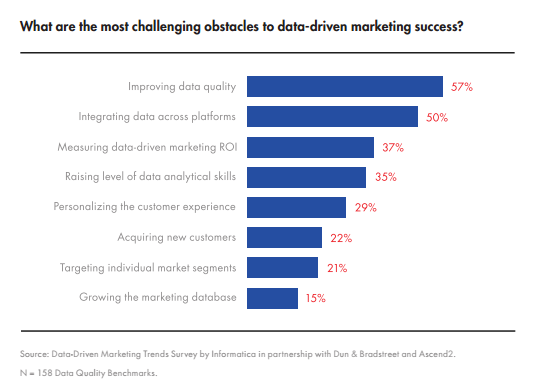
Personalizing the customer experience was cited by 58% of survey participants as a key objective for data-driven marketing. Other important objectives included targeting individual market segments (50%), measuring data-driven ROI (49%), and acquiring new customers (41%).
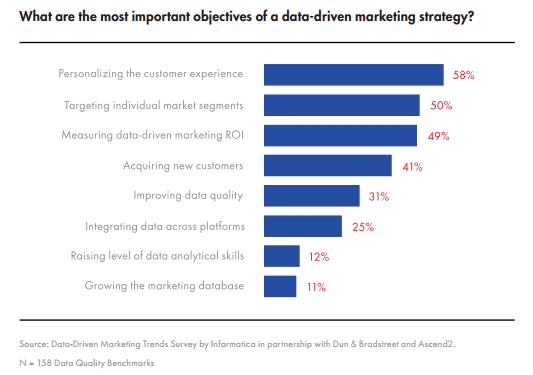
Data Quality Measures
Today’s customers interact and engage with brands on the go, through multiple channels, and at the time of their choosing. Data must be continuously monitored and improved just as quickly to keep pace and stay relevant with customers and prospects. To stay competitive in this complex and rapidly moving landscape, the Data-Driven Marketing Trends Report revealed that 80% of the most-successful data-driven organizations outsource all or part of their data quality improvement initiatives.
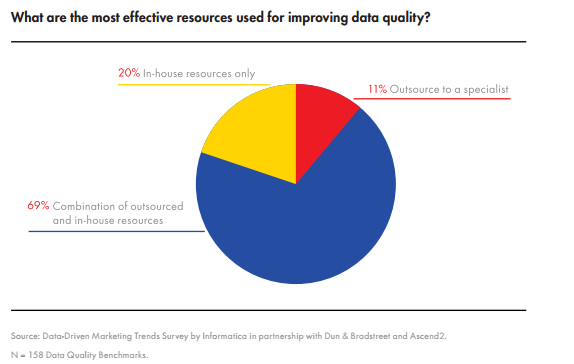
Furthermore, according to the report, “Thirty-nine percent of companies with high data quality standards cleanse their marketing data on a frequent basis (in real-time, daily, or weekly) in an effort to optimize quality. Nearly 1 out of 5 best-in-class companies (19%) use real-time data validation to maintain the highest data quality standards.”
Data quality software automates these integration processes and improves data quality by performing processes such as standardizing names and address, matching and linking data, monitoring to ensure data continues to align with business rules, and enriching records through data appending.
Real-time data validation controls can also be integrated into online forms, using rules to check the validity of data before it is entered into a marketing system. For example, verification services on web forms, CRM systems or order entry systems can instantly verify and correct phone numbers, confirm that the address entered is deliverable and conforms to USPS address standards including indicating whether a suite, unit or apartment number may be required, and validate the email address as deliverable including auto correction of some common typos.
Business Lost Due to Poor Data Quality
One of the most alarming findings from the Blazent study was that an astounding 94% of the survey respondents believe that business value is lost as a result of poor quality data. “65% of respondents believe that 10-49% of business value can be lost due to poor data quality, while 29% of respondents said 50% or more of business value can be lost. Only 6% of respondents asserted that no business value is lost as a result of poor data quality. Thus, poor data can considerably diminish productivity and the quality of results.
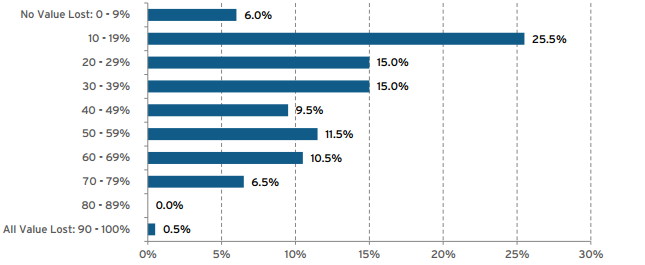
Marketers are finally starting to take notice of the major impacts– both negative and positive – that data quality has on revenues and business growth. The good news is that investments are increasing for data-driven projects. Over a quarter of organizations (26%) are increasingly their data-driven budget significantly, with an additional 46% increasingly marginally. In an age where data has truly become the defining factor for a company’s success, smart marketers are making the investments now to plan for a successful future of growth and revenue streams.
Article from Relevategroup
By Larisa Bedgood






